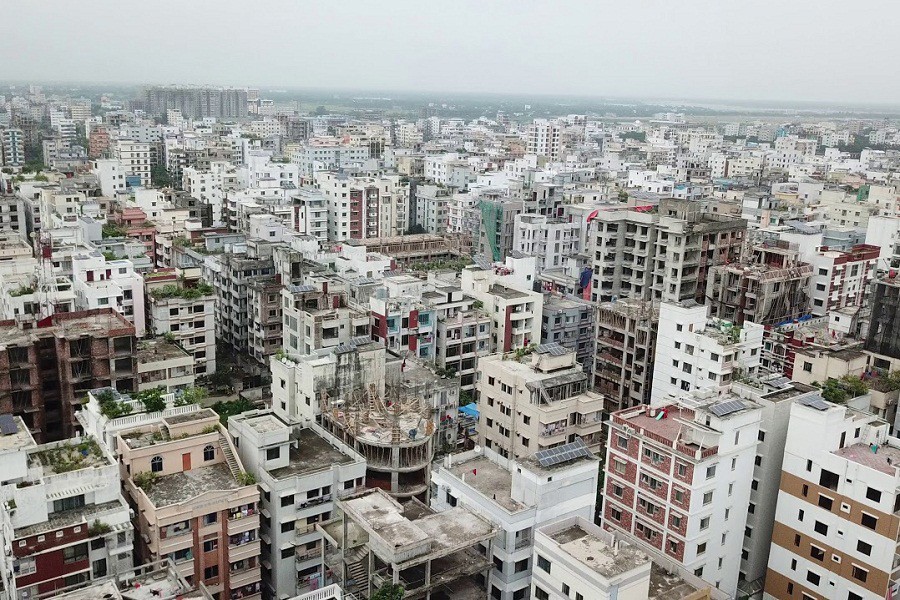
Published :
Updated :

To build a secure economic future, individuals often pursue jobs or entrepreneurial ventures. This requires foresight, preparation, and the ability to navigate personal and structural challenges. For many, the first step is choosing a location that offers the best chance at growth-professionally and personally.
Urban centres with strong civic amenities tend to attract young people and job seekers, who search for cities that offer a higher quality of life. In Bangladesh, this typically leads to one destination: Dhaka. The capital remains the country's dominant hub for employment, education, and infrastructure. However, this centralisation comes at a cost of overcrowding, rising living expenses, and pressure on resources.
Employment opportunities in Bangladesh remain heavily skewed towards Dhaka, resulting in an uneven economic landscape. Decentralising work and development to other districts is not a matter of choice but a necessity. Rather than creating disparity, this shift can enhance productivity, encourage regional investment, and contribute to a more stable national economy.
Globally, decentralisation has played a critical role in development strategies. Countries like the United States, Malaysia, Australia, and India have invested in building regional hubs beyond their capitals. These efforts have not only reduced pressure on primary cities but also unlocked local potential.
The United States offers a compelling example. While Washington DC hosts key institutions like the World Bank and IMF, other major functions are spread across states. New York is home to the United Nations. California leads in technology through Silicon Valley. States like Texas, Georgia, and Illinois each contribute uniquely to the national economy, attracting talent and investment independently.
Australia positions Sydney and Melbourne as business centres, while Canberra remains the administrative capital. Malaysia has created sector-specific districts-Cyberjaya for technology, Putrajaya for government, and Johor for trade and logistics.
In neighbouring India, the development of regional strengths is evident. Bangalore has become a major IT hub, Pune is recognised for higher education, and Mumbai leads in finance and film. These cities collectively lessen the pressure on Delhi and allow for more balanced national growth.
In contrast, Bangladesh continues to see concentrated migration towards Dhaka, driven by access to jobs, quality education, and urban facilities. According to the United Nations' World Urbanisation Prospects, Dhaka's population stands at nearly 24 million and continues to grow. This population pressure not only strains the city but also limits opportunities for development elsewhere.
A more even distribution of infrastructure and investment would ease the burden on Dhaka and allow other regions to thrive. Cities like Chattogram, Sylhet, Khulna, and Rajshahi already show potential to serve as regional career hubs.
Chattogram has long been a commercial centre. With the presence of a major seaport and customs infrastructure, it offers advantages for trade and industry. Its educational institutions, improved transport, and growing corporate presence make it increasingly attractive to both businesses and professionals.
Khulna, with access to a sea port and regional labour market, has the capacity to support heavy industries and technology parks. Development here could serve the broader south-west region and reduce dependency on Dhaka.
Sylhet, known for its natural beauty, attracts both domestic and international tourists. However, the city lacks adequate infrastructure in hospitality and tourism. Targeted investment could turn Sylhet into a major tourism economy while generating employment and international visibility. Many IT companies have made their office there and it could be a potential IT outsourcing hub in Bangladesh.
Rajshahi region requires strategic support. Despite challenges, it holds promise due to affordable labour and available land and clean air. It could be a hub for the arts, film and creative sector. Public and private investment in technology, education, or creative manufacturing could transform Rajshahi into an economic anchor for northern Bangladesh.
Experts echo this call for decentralisation. Dr Tanvir Mohammad Hayder Arif, proctor at the University of Chittagong, said, "I will request the government to decentralise the organisational structure to different districts of Bangladesh. Then, the people of the whole country will enjoy their rights properly and will not be deprived of justice."
H M Rayhan, deputy assistant director at Walton High-tech Industries Limited, shared his experience: "I think this city can be a great choice for job seekers and students, as Chattogram provides all types of advanced living facilities to its people. Nowadays, the multinational companies are setting up their offices here, and so there is a big scope for employment at those companies. For people who want to take on challenges and work in a dynamic place, Chattogram can be one of the best options for them."
The case for decentralisation is clear. While government leadership is essential, private sector participation is equally important. A joint effort will not only improve employment distribution but also raise the overall quality of life across the country. If Bangladesh is to meet the demands of its growing population and economy, the time to act is now.
tanjimhasan001@gmail.com


 For all latest news, follow The Financial Express Google News channel.
For all latest news, follow The Financial Express Google News channel.